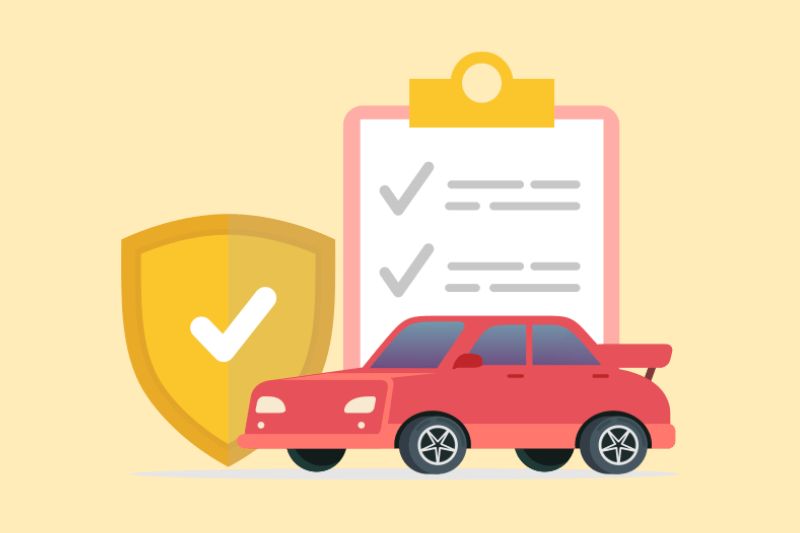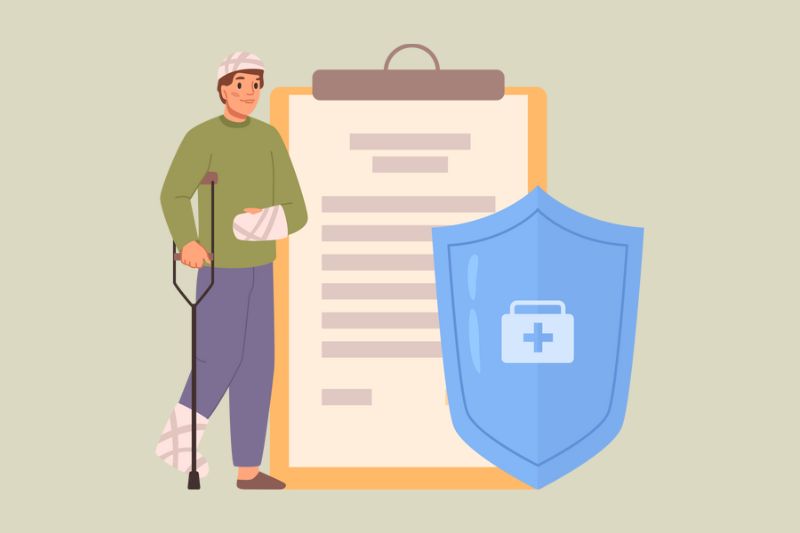
Many people view insurance as a scam, but it's crucial to understand its real purpose.
To be honest, never mix insurance and investing because both work very differently. Insurance protects you against sudden difficulties when investing is done for a better future. So, insurance is definitely valuable and important.
However, the condition is, never make a mistake in choosing insurance and know its terms and conditions well while choosing.
So, let's start from the beginning by knowing what types of insurance are available and when to buy them. With this blog, we explore the various types of insurance available in India and guide you on the optimal times to purchase them.
Understanding the Basics
Simply, Insurance is a way to protect yourself financially against unexpected events or losses. When you buy insurance, you make regular payments called premiums to an insurance company.
In return, if something bad happens, like a car accident, illness, or damage to your home, the insurance company helps cover the costs. This means you won't have to pay the full amount out of your own pocket, making it easier to handle unexpected expenses.
There are two primary types:
- Life Insurance
- General Insurance
Life Insurance:

Life insurance is crucial for people with dependents, ensuring financial security for your family if you pass away unexpectedly.
Types:
Term Life Insurance: It covers you for a specific period. If you die during this term, the beneficiary receives the death benefit. It's the most affordable type with high coverage at low premiums but offers no maturity benefits if you survive the term.
Whole Life Insurance: Provides lifelong coverage with a savings component. It includes a death benefit and may accumulate cash value that can be borrowed or withdrawn.
Endowment Plans: Combine life insurance with savings, offering a lump sum after a specific term or upon the policyholder’s death. These plans provide a mix of protection and savings.
Unit Linked Insurance Plans (ULIPs): These plans combine investment and insurance, with premiums split between insurance cover and investments in funds. Returns are market-linked, offering the potential for higher gains along with life coverage.
When to Buy:
Early Career: Term life insurance is ideal when you start working, providing high coverage at low premiums to ensure your family’s financial protection in the early stages of your career.
After Major Life Events: Marriage, buying a house, or having children increase financial responsibilities, making it crucial to reevaluation and ensure enough life coverage.
Before Retirement: Ensure you have enough coverage to support dependents. Consider whole life insurance or endowment plans for a secure post-retirement life.
Key Considerations:
- Choose a tenure that aligns with your long-term financial goals and responsibilities.
- Assess your financial needs and debts to decide on the right amount of coverage.
- Ensure the premiums fit within your budget to maintain consistent payments.
- Consider extra coverage options, like critical illness or accidental death benefits, for better protection.
General Insurances:
1. Health Insurance

Types:
Individual Health Insurance: Covers medical expenses for one person, including hospitalization, pre and post-hospitalization, and sometimes day-care procedures.
Family Floater Policy: Covers the whole family under one plan, with a shared sum insured among all members.
Critical Illness Insurance: Provides a lump sum on diagnosing specific critical illnesses like cancer, heart attack, or kidney failure, helping cover high treatment costs and related expenses.
Senior Citizen Health Insurance: Designed for people over 60, covers age-related health issues and often includes annual health check-ups and specific illness coverage.
When to Buy:
Early Adulthood: Buying health insurance early means lower premiums and better coverage. Young people are less likely to have pre-existing conditions, so it's easier to get comprehensive coverage.
After Marriage: Choose a family floater policy to cover your spouse and children. This is a cost-effective way to provide health security for your whole family.
Aging Parents: Consider senior citizen policies for aging parents to protect them against high medical costs. These policies are designed to cover common health issues in older adults.
Key Considerations:
- Choose a coverage amount that can easily cover potential medical expenses.
- Check if the insurer's network hospitals offer cashless treatment.
- Understand what is covered and what is not to avoid surprises during claims.
- Be aware of waiting periods for pre-existing conditions and specific treatments.
2. Motor Insurance

Types:
Third-Party Liability Insurance: Mandatory in India, it covers damages to others in an accident but not your own vehicle.
Comprehensive Insurance: Covers damages to others and your own vehicle from accidents, theft, fire, natural disasters, and vandalism.
When to Buy:
Immediately After Purchase: You must have at least third-party insurance before driving a new vehicle. Comprehensive insurance is recommended to protect your vehicle from potential damages.
During Renewal: Regularly review and renew your motor insurance to ensure continuous coverage. Assess your coverage needs annually and adjust the policy as needed.
Key Considerations:
- Ensure the IDV (Insured Declared Value) is accurate, as it determines your claim amount for total loss or theft.
- Consider add-ons like zero depreciation, engine protection, or roadside assistance for better coverage.
- Maintain a good driving record to get No Claim Bonus (NCB) discounts on premiums.
- Choose an insurer with a quick and easy claim settlement process.
3. Home Insurance

Types:
Building Insurance: It covers the house structure against risks like fire, earthquakes, and floods, protecting the physical structure of the building.
Content Insurance: Protects household items like furniture, electronics, and jewelry, protects valuable belongings against theft, damage, or loss.
Comprehensive Home Insurance: Combines building and content insurance for complete protection, securing both the structure and contents of your home.
When to Buy:
Home Purchase: Right after buying a new home, get insurance to protect your investment from potential risks.
Natural Disasters: If you live in a disaster-prone area, comprehensive home insurance is essential for financial protection against natural disasters.
Key Considerations:
- Evaluate your home and belongings' value to choose the right coverage.
- Know what events and risks the policy covers.
- Ensure the coverage amount can rebuild your home at current prices.
- Pick an insurer known for efficient and fair claim settlements.
4. Travel Insurance

Types:
Domestic Travel Insurance: This insurance covers risks like trip cancellations, medical emergencies, and lost baggage within India, ensuring financial protection while traveling in the country.
International Travel Insurance: Provides coverage for overseas trips, including medical expenses, trip interruptions, and lost passports, essential for handling unexpected situations abroad.
When to Buy:
Before Traveling: Buy travel insurance as soon as you book your trip to cover potential risks from the start, protecting against cancellations and emergencies.
Frequent Travelers: Get an annual multi-trip policy to save money and ensure continuous coverage. This provides convenience and comprehensive protection for multiple trips.
Key Considerations:
- Make sure the policy covers all travel risks, including medical emergencies and trip disruptions.
- Consider extra coverage needed for specific destinations, like high medical costs or adventure activities.
- Choose a policy with an easy and accessible claim process.
- Ensure the policy duration matches your trip length, including possible extensions.
5. Personal Accident Insurance

Types:
Individual Personal Accident Policy: This covers accidental death, permanent total disability, and permanent partial disability, providing financial support in case of accidents.
Group Personal Accident Policy: This type of policy is generally offered by employers, it provides accident coverage for employees, ensuring their welfare and financial security.
When to Buy:
At Any Age: Accidents are unpredictable, so personal accident insurance is wise for everyone. It provides financial stability in case of accidental injuries.
High-Risk Jobs: It is essential for those in high-risk professions like construction, manufacturing, or transportation, to ensure financial protection in case of workplace accidents.
Key Considerations:
- Choose a coverage amount that offers enough financial support for severe accidents.
- Understand the policy benefits, including death, disability, and hospitalization coverage.
- Know the exclusions, like self-inflicted injuries or accidents under the influence of alcohol.
- Ensure the premiums are affordable and provide sufficient coverage.
6. Business Insurance

Types:
Fire and Special Perils Insurance: This covers business property against fire, natural calamities, and other specified risks. This protects the physical assets of your business.
Marine Insurance: This insurance helps you protect against loss or damage during transit by sea, air, or land. This is crucial for businesses involved in shipping goods.
Liability Insurance: Covers legal liabilities for injury or damage to third parties, protecting against legal claims and costs.
Employee Benefits Insurance: Offers health and accident coverage for employees, boosting their satisfaction and loyalty.
When to Buy:
Business Start-Up: It is essential to protect your assets and investments from the beginning to safeguard your business against early risks.
Expansion: As your business grows, update your insurance to cover new risks and liabilities, ensuring ongoing protection.
Key Considerations:
- Conduct a thorough risk assessment to understand what insurance you need.
- Make sure the policy covers all key risks, like property damage, legal issues, and employee health.
- Compare premium costs with coverage benefits to keep it affordable.
- Check the insurer’s reputation and how well they handle claims.
Conclusion
Each type of insurance has unique features, and your choice should change based on your needs, situation, or age. You can easily compare policies from different companies on websites like Policy Bazaar.
But if you’re not familiar with insurance, consult a professional. Consider talking to experts or those who sell insurance, and get their advice before making a decision.
You May Also Like:






